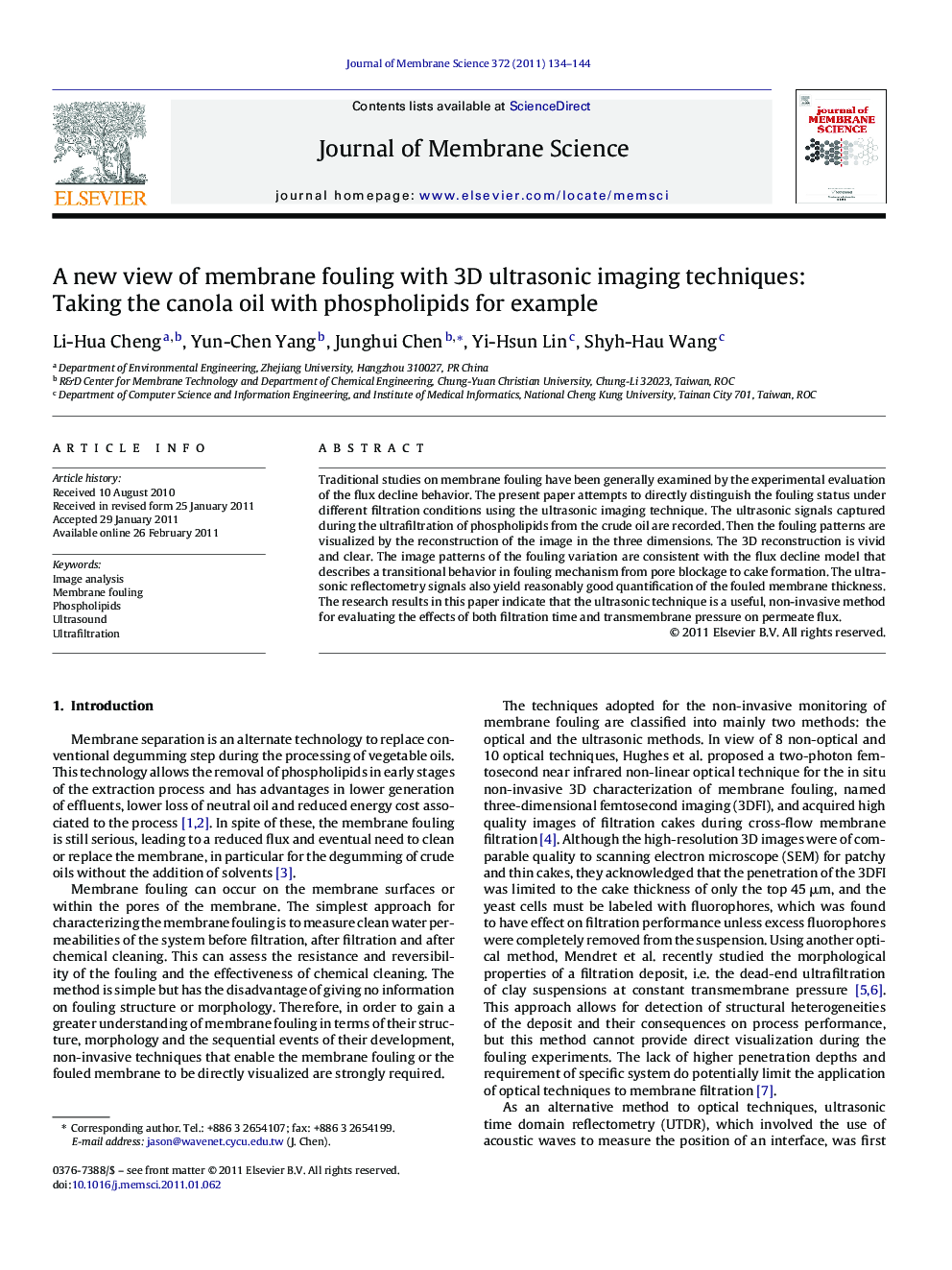| Article ID | Journal | Published Year | Pages | File Type |
|---|---|---|---|---|
| 635458 | Journal of Membrane Science | 2011 | 11 Pages |
Traditional studies on membrane fouling have been generally examined by the experimental evaluation of the flux decline behavior. The present paper attempts to directly distinguish the fouling status under different filtration conditions using the ultrasonic imaging technique. The ultrasonic signals captured during the ultrafiltration of phospholipids from the crude oil are recorded. Then the fouling patterns are visualized by the reconstruction of the image in the three dimensions. The 3D reconstruction is vivid and clear. The image patterns of the fouling variation are consistent with the flux decline model that describes a transitional behavior in fouling mechanism from pore blockage to cake formation. The ultrasonic reflectometry signals also yield reasonably good quantification of the fouled membrane thickness. The research results in this paper indicate that the ultrasonic technique is a useful, non-invasive method for evaluating the effects of both filtration time and transmembrane pressure on permeate flux.
Research highlights► Easy detection of the fouling status under different filtration conditions. ► Direct visualization of the internal structure of fouled membrane. ► Quantitative characterization of the total thickness of the fouling on membrane.
